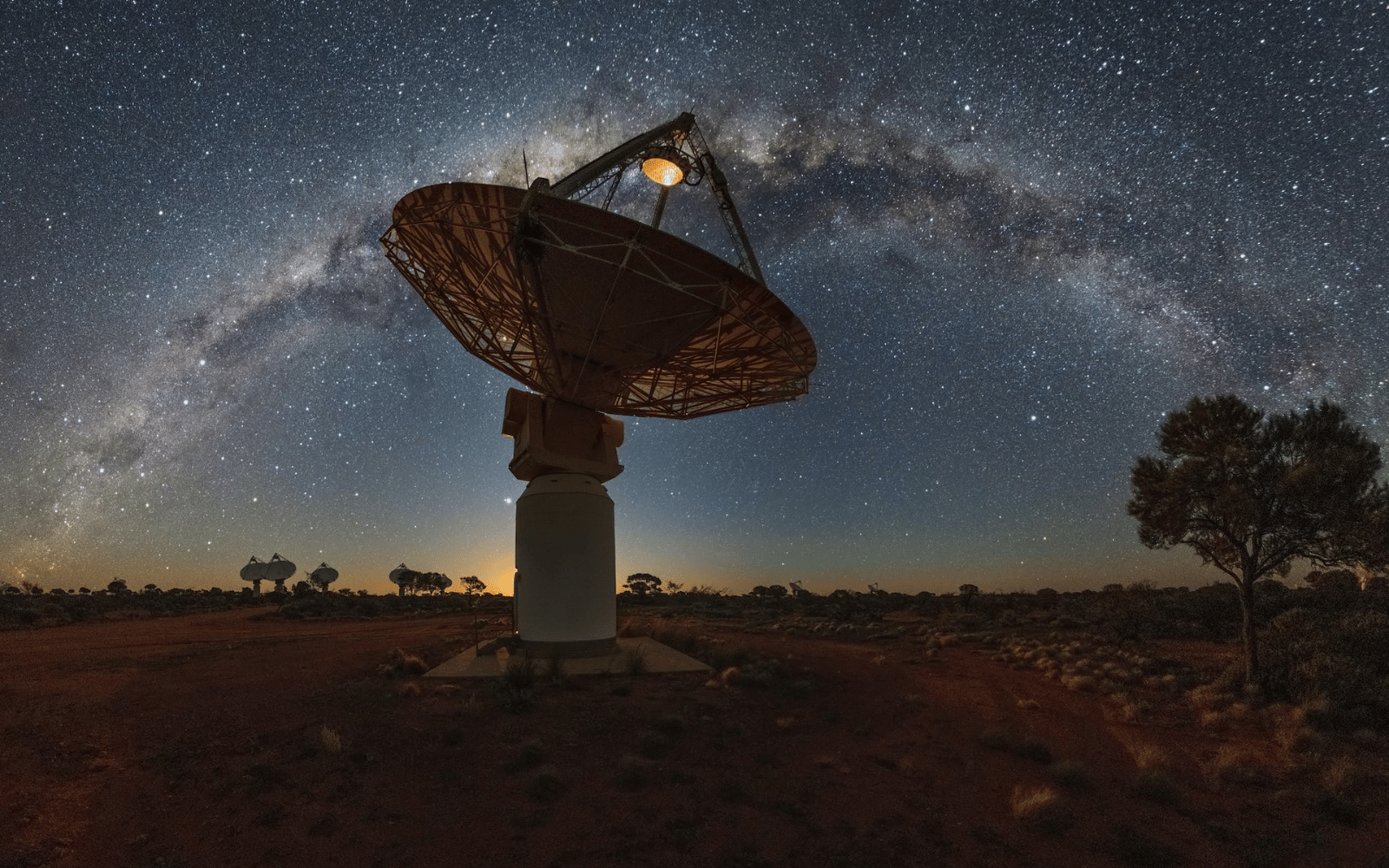Supermassive black holes reside in a number of the largest galaxies within the universe. They are typically billions of occasions extra huge that our Solar, and never even gentle itself can escape a black gap as soon as it will get too shut.
However it’s not all darkness. Supermassive black holes energy a number of the most luminous celestial objects within the universe – lively galactic nuclei, which shine throughout the spectrum of sunshine, together with radio waves.
The lively galactic nucleus in close by galaxy Messier 87 is a prodigious emitter of radio waves, 27 orders of magnitude extra highly effective than the strongest radio transmitters on Earth.
However not all galaxies blast radio waves like Messier 87. Some very huge close by galaxies have gone undetected within the radio spectrum regardless of containing supermassive black holes. Are they switched on within the radio in any respect, or are they – and due to this fact their black holes – completely silent?
To search out out, we looked for radio waves from essentially the most huge galaxies within the close by universe, with our outcomes now accepted for publication within the Publications of the Astronomical Society of Australia.
An enormous engine
It could appear odd that black holes can energy something. In any case, irrespective of – not even gentle – can escape a black gap. However rather a lot can occur earlier than the purpose of no return, referred to as the occasion horizon.
As matter falls in direction of the black gap, it picks up large pace. Particles can find yourself travelling near the pace of sunshine, and when particles smash at that pace, they’ll launch a staggering quantity of vitality.
A number of % of the mass that falls in direction of a black gap – “feeds” it – can get launched as gentle. Feed a black gap, and it may be a giant engine that blasts out radio waves.
So, supermassive black holes are in all the most important galaxies, however are they at all times being fed? That query motivated our examine. To hear for radio waves from these huge objects, we used the ASKAP radio telescope in Western Australia, owned and operated by CSIRO – Australia’s nationwide science company.
Tuning in on the radio
Means again within the Nineteen Forties, astronomers began detecting radio waves from some huge galaxies utilizing the primary radio telescopes. This consists of galaxies acquainted to beginner astronomers, together with Messier 87 within the Virgo constellation and NGC 5128 in Centaurus.
As know-how superior, extra very huge galaxies had been detected in radio waves. Within the early 2000s, astronomers discovered that about a 3rd of very huge galaxies within the Sloan Digital Sky Survey had been detectable within the radio knowledge from the Very Giant Array, situated in New Mexico.
A decade in the past, our crew additionally used knowledge from the Very Giant Array to seek for radio emissions from essentially the most huge close by galaxies. Some had been simply detected whereas others had been indistinguishable from noise.
Nonetheless, there was a robust trace. Whereas the radio alerts from essentially the most huge galaxies had been generally not distinguishable from noise individually, we at all times discovered a constructive sign.
If some galaxies weren’t emitting radio waves, we’d count on random noise to supply a mixture of constructive and detrimental alerts. Getting a constructive sign each time steered all huge galaxies are radio sources. However digging into the noise left us uncertain, till now.
New telescopes and a brand new view
There have been main advances in radio telescopes throughout the previous decade, each in radio receivers and computing energy. New radio telescopes embrace the ASKAP radio telescope and the Murchison Widefield Array, each situated at Inyarrimanha Ilgari Bundara, CSIRO’s Murchison Radio-astronomy Observatory on Wajarri Yamaji nation in Western Australia. There may be additionally the Low Frequency Array (Lofar) in Europe.
These telescopes can survey the sky with better sensitivity and pace than the earlier era of radio telescopes. For instance, the Fast ASKAP Continuum Survey is only a preliminary radio survey of 83% of your entire sky, however is already thrice extra delicate than comparable surveys with the earlier era of radio telescopes.
For our new examine, we now not wanted to search for mere hints of the noise. We detected radio waves from all 40 of essentially the most huge galaxies in our survey space.
Learn Extra: We’ve detected a star barely hotter than a pizza oven – the coldest ever discovered to emit radio waves
Dialled up and down
So, it now appears to be like like all very huge galaxies are emitting radio waves, however are all of their black holes being fed? Most are, however in all probability not all.
Research with Lofar counsel some radio sources in huge galaxies are afterglows from earlier exercise. It’s probably these are non permanent pauses, and these black holes will hearth up once more.
One other piece of the puzzle is the radio energy. Two galaxies of the identical mass can differ in radio energy by an element of 10,000. Why does this occur?
We don’t know the reply but, however there are some clues. Our work and a current examine with Lofar discover that, on common, the galaxies that rotate the least are the strongest radio wave emitters. Among the exceptions to this pattern are curious, with proof of mergers with different galaxies.
There may be a lot to find out about very huge galaxies and their black holes, however knowledge from the brand new era of radio telescopes has revealed an awesome deal.
All very huge galaxies emit radio waves, however their energy varies. Figuring out how all this works might be a problem, however there are clues for astronomers to now observe.
